Student Loans
Student Loans Rates
| Lender ?Our partners offer private student loans. Depending on the lender, they could also refinance both private and federal student loans. | Fixed Rates (APR) ?Fixed-rate students will have a predictable monthly payment amount that does not change for the life of the loan. | Variable Rates (APR) ?Variable-rate student loans have interest rates that can change during the repayment period. Interest rates may increase or decrease at any time and typically do so based on changes to LIBOR/SOFR. Often, the introductory rate on a variable-rate loan is lower than that of a fixed rate loan, though it has the potential to increase later. | Terms ?The repayment terms of private student loans have different ranges depending on the partner. | Soft Credit Check ?A soft credit check occurs when someone initiates an authorized check on your credit report that is not for the purpose of approving an application for new credit. This will not impact your credit score. | |
|---|---|---|---|---|---|
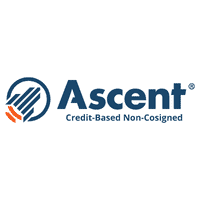 |
9.20% – 15.11% | 9.46% – 15.34% | 5, 12, 15 | REQUEST RATE | |
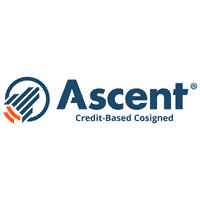 |
4.53% – 15.36% | 6.16% – 15.59% | 5, 12, 15 | REQUEST RATE | |
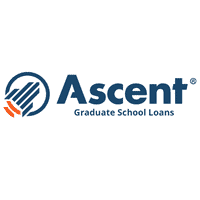 |
5.37% – 15.11% | 6.69% – 15.34% | 5, 12, 15 | REQUEST RATE | |
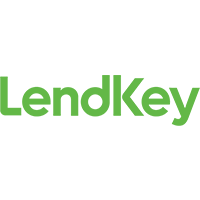 |
4.39% – 11.11% | 5.84% – 11.11% | 10 | REQUEST RATE | |
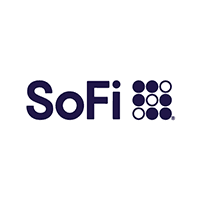 |
4.44% – 14.83% | 5.99% – 14.83% | 10 | REQUEST RATE | |
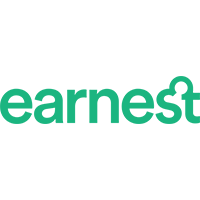 |
4.43% – 15.90% | 5.32% – 16.20% | 10 | REQUEST RATE | |
 |
0.99% – 15.99% | Varies | 10 | REQUEST RATE | |
 |
0.94% – 13.63% | Varies | 5 to 20 | REQUEST RATE | |
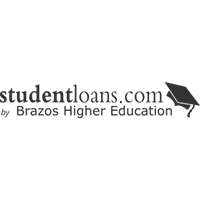 |
2.71% – 6.86% | 5.32% – 9.46% | 5 to 20 | REQUEST RATE | |
Undergraduate Loan |
4.50% – 15.49% | 6.37% – 16.70% | 10 to 15 |
REQUEST RATE
view loan disclosures
Borrow responsibly
We encourage students and families to start with savings, grants, scholarships, and federal student loans to pay for college. Students and families should evaluate all anticipated monthly loan payments, and how much the student expects to earn in the future, before considering a private student loan.
Lowest rates shown include the auto debit discount.
Loans for Undergraduate & Career Training Students are not intended for graduate students and are subject to credit approval, identity verification, signed loan documents, and school certification. Student must attend a participating school. Student or cosigner must meet the age of majority in their state of residence. Students who are not U.S. citizens or U.S. permanent residents must reside in the U.S., attend school in the U.S., apply with a creditworthy cosigner (who must be a U.S. citizen or U.S. permanent resident), and provide an unexpired government-issued photo ID. Requested loan amount must be at least $1,000.
Advertised APRs for undergraduate students assume a $10,000 loan to a student who attends school for 4 years and has no prior Sallie Mae-serviced loans. Interest rates for variable rate loans may increase or decrease over the life of the loan based on changes to the 30-day Average Secured Overnight Financing Rate (SOFR) rounded up to the nearest one-eighth of one percent. Advertised variable rates are the starting range of rates and may vary outside of that range over the life of the loan. Interest is charged starting when funds are sent to the school. With the Fixed and Deferred Repayment Options, the interest rate is higher than with the Interest Repayment Option and Unpaid Interest is added to the loan’s Current Principal at the end of the grace/separation period. To receive a 0.25 percentage point interest rate discount, the borrower or cosigner must enroll in auto debit through Sallie Mae. The discount applies only during active repayment for as long as the Current Amount Due or Designated Amount is successfully withdrawn from the authorized bank account each month. It may be suspended during forbearance or deferment.
3 repayment options: Deferred payment; $25 Fixed repayment; Interest repayment.
Smart Option Student Loan: Examples of typical costs for a $10,000 Smart Option Student Loan with the most common fixed rate, fixed repayment option, 6-month separation period, and two disbursements: For a borrower with no prior loans and a 4-year in-school period, it works out to a 10.28% fixed APR, 51 payments of $25.00, 119 payments of $182.67 and one payment of $121.71, for a Total Loan Cost of $23,134.44. For a borrower with $20,000 in prior loans and a 2-year in-school period, it works out to a 10.78% fixed APR, 27 payments of $25.00, 179 payments of $132.53 and one payment of $40.35 for a total loan cost of $24,438.22. Loans that are subject to a $50 minimum principal and interest payment amount may receive a loan term that is less than 10 years.
Information advertised valid as of 8/25/2023.
SLM Corporation and its subsidiaries, including Sallie Mae Bank, are not sponsored by or agencies of the United States of America.
SALLIE MAE RESERVES THE RIGHT TO MODIFY OR DISCONTINUE PRODUCTS, SERVICES, AND BENEFITS AT ANY TIME WITHOUT NOTICE. Sallie Mae, the Sallie Mae logo, and other Sallie Mae names and logos are service marks if Sallie Mae Bank. All other names and logos used are the trademarks or service marks of their respective owners.
The Student Loan Calculator is not the creditor for these loans and is compensated by Sallie Mae for the referral of Sallie Mae loan customers.
|
When you have explored all alternative options for student loans, private student loans can be considered. If you have exhausted grant and scholarship opportunities, as well as federal student loan options, private student loans may provide assistance. Unlike grants, scholarships, and federal loans, private student loans are offered by individual lenders who establish their own terms, including APR, loan duration, and eligibility criteria such as credit score and household income requirements. It is advisable to consult with a financial professional before selecting the loan that best suits your needs.
Student Loan Application Process



While you can use a private student loan for a variety of degree programs and situations, it’s wise to limit your borrowing. Since they’re credit-based, only especially creditworthy applicants secure low APR offers. Private student loans also carry fewer protections than federal loans.
Keep in mind each private student loan provider has its own set of terms, rates, and eligibility requirements that vary, unlike a typical federal loan.
How private student loans compare to federal student loans
| Private | Federal | |
|---|---|---|
| Credit check | ||
| Cosigner | ||
| Forgiveness programs | ||
| Repayment flexibility | ● In-school deferment and short-term economic hardship forbearance could be available | ● Change repayment plans at any time and for free ● Variety of deferment and forbearance options |
| Interest rates | Fixed and variable APRs | Fixed rates |
| Annual borrowing limit | Up to 100% of cost of attendance | $5,500 to $12,500 (tooltip: for undergraduates) |
Private student loans are issued by private financial institutions. Interest rates differ from one lender to another, and you usually have a choice between a fixed or variable rate. Before approving you for a private student loan, private lenders look at your financial credentials, including your credit. If you can’t qualify on your own, you might have to apply with a cosigner.
Federal student loans, on the other hand, are issued by the Department of Education. They come with a fixed interest rate that is set by Congress each year, and you won’t need to pass a credit check to qualify for most federal student loans. Federal loans are also eligible for a variety of repayment plans, such as income-driven repayment. They may also be eligible for federal loan forgiveness programs.
| Rates | Fixed | Variable |
|---|---|---|
| Federal Undergraduate |
3.73% | N/A |
| Graduate | 5.28% | N/A |
| PLUS (grads, parents) | 6.28% | N/A |
| Private | 2.94% to 12.99% | 0.94% to 13.49% |
*Rates are examples and may not be up to day.
Private student loans also provide borrowers with a greater degree of choice. Instead of being assigned a fixed-rate federal loan to be repaid over a 10-year term, you might opt for a variable rate and a shorter or longer repayment plan.
Private education debt comes with a higher borrowing limit, too, allowing you to cover any gaps in your school’s cost of attendance. With that said, it’s wise to only borrow what you need — and what you can afford to repay. Estimate your potential monthly dues using today’s rates and a student loan repayment calculator.
How to maximize federal financial aid
Because federal student loans carry such wide-ranging repayment flexibility, it’s generally recommended to max out your federal loan allotment before resorting to a private student loan.
The Free Application for Federal Student Aid (FAFSA) is the gateway to federal loans and other aid programs. After completing the FAFSA, you’ll be eligible to accept loans offered by your school — but only up to the limit.
Federal student loan limits
| Subsidized | Unsubsidized | PLUS | |
|---|---|---|---|
| Undergraduate direct loans | Up to $5,500/year | Up to $12,500/year | |
| Graduate direct loans | Up to $20,500/year | Up to your school’s cost of attendance, minus any other financial aid you already received | |
| Parents of undergraduates | Up to the school’s reported cost of attendance, minus any other financial aid already received |
Note that the government covers interest during your grace period or other areas of deferment for subsidized loans, which are only available to students with financial needs. By contrast, unsubsidized loans are available to any student, regardless of financial need, but they start accruing interest right away.
Private student loan amounts
Almost all undergraduate students will need a cosigner (usually a parent) to qualify. Once you qualify, you can typically borrow as much as you need to pay for school.
Like with PLUS loans, private lenders will usually subtract any financial aid you already received before covering your remaining cost of attendance.
- Does everyone get approved for a private student loan?
- How much in student loans can I qualify for?
- Are there any disadvantages when it comes to private student loans?
- What are the advantages of taking out private student loans?
- Where can I find more student loan resources?
- Do private student loans go directly to the school?
- What happens after applying for a private student loan?
- How much should you borrow in private student loans?
- Will I need a cosigner for private student loans?
- Can I get a private student loan with bad credit?
- How do I qualify for a private student loan?
No, not everyone is guaranteed approval for a private student loan. Private lenders typically have their own eligibility requirements and credit criteria that borrowers must meet in order to be approved for a loan. These requirements can include a minimum credit score, a stable income, a co-signer (in some cases), and other factors.
Private lenders evaluate an applicant’s creditworthiness to assess the risk involved in lending them money. If you have a limited credit history or a low credit score, it may be more challenging to qualify for a private student loan on your own. In such cases, having a co-signer with a stronger credit profile could improve your chances of approval.
It’s important to research and compare different private lenders to understand their specific requirements and loan terms. Additionally, exploring federal student loans, which have more lenient eligibility criteria, should also be considered as they can provide more favorable options for financial aid.
The amount of student loans you can qualify for depends on several factors, including your financial need, the cost of your education, and the specific loan programs available to you. To determine your eligibility, it is best to contact the financial aid office at the educational institution you plan to attend. They can provide you with information on the types of loans available and help you understand the borrowing limits based on your circumstances.
In addition to the factors mentioned earlier, your eligibility for student loans can also be influenced by your enrollment status (full-time or part-time), your academic progress, and whether you are a dependent or independent student. The specific loan programs available to you may include federal loans, such as Direct Subsidized Loans and Direct Unsubsidized Loans, as well as private loans offered by banks and other financial institutions.
Federal student loans often have borrowing limits that vary depending on your grade level and whether you are a dependent or independent student. These limits can range from a few thousand dollars per year for undergraduate students to higher amounts for graduate and professional students. Private loans, on the other hand, may have different borrowing limits and eligibility criteria, which can vary among lenders.
It’s important to remember that while student loans can provide financial assistance for your education, it’s generally advisable to borrow only what you need and consider other sources of funding, such as scholarships, grants, and personal savings, to minimize your overall debt burden. Exploring all your options and working closely with the financial aid office will help you determine the maximum amount you can qualify for while making informed decisions about your education financing.
Yes, there are certain disadvantages associated with private student loans that you should consider:
- Higher Interest Rates: Private student loans often have higher interest rates compared to federal student loans. The exact rate depends on factors such as your creditworthiness and market conditions. Higher interest rates can result in increased repayment costs over time.
- Creditworthiness Requirements: Private lenders consider credit history and income when evaluating loan applications. If you have limited credit history or a lower credit score, you may need a cosigner or face challenges in obtaining approval. This can limit access to loans or result in higher interest rates.
- Lack of Borrower Protections: Unlike federal student loans, private loans may not offer borrower protections such as income-driven repayment plans, loan forgiveness options, or generous deferment and forbearance programs. This can make it more challenging to manage repayment if you encounter financial difficulties.
- Limited Repayment Flexibility: Private lenders may not provide as much flexibility in repayment options as federal loans. You may have fewer options for income-based or extended repayment plans, which could affect your ability to manage monthly payments.
- Cosigner Requirements: Private lenders often require a cosigner, especially if you have limited credit history or a lower credit score. Relying on a cosigner means involving someone else in your financial obligations, and their credit may be at risk if you face repayment difficulties.
- Potential Fees and Costs: Private student loans may include origination fees, late payment fees, or other charges. These additional costs can add to the overall expense of borrowing and should be considered when comparing loan options.
It’s essential to carefully evaluate the terms and conditions of private student loans, compare offers from multiple lenders, and consider the long-term financial implications. Be sure to exhaust all federal student loan options, scholarships, and grants before resorting to private loans. Consulting with financial professionals or loan servicers can provide personalized guidance based on your specific circumstances.
Private student loans offer several advantages, including:
- Flexibility in Loan Amount: Private student loans can cover the full cost of attendance, even beyond what federal loans offer. This flexibility allows you to bridge the gap between the financial aid you receive and the actual cost of education.
- Customized Repayment Options: Private lenders often provide various repayment options, allowing you to choose the plan that best fits your financial circumstances. You may have the flexibility to select different repayment terms, such as fixed or variable interest rates and various loan duration options.
- Potentially Lower Interest Rates: Depending on your creditworthiness, private student loans can offer competitive interest rates. If you have a good credit score or a cosigner with strong credit, you may qualify for lower rates compared to some federal student loans.
- Faster Application and Disbursement: Private student loans typically have a streamlined application process, and funds can be disbursed quickly. This allows you to access the funds you need in a timely manner to pay for educational expenses.
- Cosigner Release Options: Some private lenders offer cosigner release programs, allowing you to remove the cosigner from the loan after meeting certain requirements, such as making a certain number of consecutive on-time payments.
- Bridge for International Students: Private student loans can be an option for international students who may not be eligible for federal student loans. However, international students may require a creditworthy U.S. citizen or permanent resident cosigner to qualify.
It’s important to note that while private student loans offer advantages, they also have considerations. Private loans may lack some borrower protections and benefits provided by federal student loans, such as income-driven repayment plans, loan forgiveness programs, and generous deferment and forbearance options.
Before deciding on private student loans, it’s recommended to exhaust all federal student loan options, scholarships, and grants first. Carefully compare offers from multiple lenders, review the terms and conditions, and consider consulting with financial professionals to make an informed decision based on your individual circumstances.
The world of student loans can be confusing to navigate, and doing it alone is darn near impossible.
Fortunately, there are many ways to get help without paying for it.
- Talk to your high school’s guidance counselor
- Seek out community assistance offered by your library, bank, or other organization
- Take advantage of on-campus college resources like your financial aid office
- Find professional help in the form of nonprofit credit counseling.
- Contact federal loan servicers and the Education Department’s ombudsman via StudentAid.gov.
- Reach out to private student loan companies about their products and services
Also consult free online resources like Student Loan Calculator, where you can get your questions answered via blog content or make the math of borrowing simpler using our suite of calculators. For now, these guides might be most useful:
Yes, private student loans can be disbursed directly to the school. Once your private student loan is approved and all necessary documentation is completed, the lender will typically work with your school’s financial aid office to coordinate the disbursement of funds.
The funds are sent to the school, and the school will apply the loan proceeds to cover your educational expenses. These expenses may include tuition, fees, room and board, and other eligible costs specified by your school. The exact process may vary depending on the school’s policies and procedures.
It’s important to communicate with your school’s financial aid office and the lender to ensure a smooth disbursement process. Be aware of any deadlines or requirements set by your school for private loan disbursement, as timely coordination is essential to avoid any disruptions in your enrollment or payment of educational expenses.
Always review and understand the terms and conditions of the loan agreement, including the disbursement process, with your lender. If you have any questions or concerns, reach out to the lender or your school’s financial aid office for clarification and guidance.
After applying for a private student loan, the following steps typically occur:
- Application Review: The lender reviews your loan application, which includes information about your personal details, financial situation, and the requested loan amount. They may also conduct a credit check to assess your creditworthiness.
- Loan Approval/Denial: Based on their evaluation of your application and creditworthiness, the lender will determine whether to approve or deny your loan request. If approved, they will provide you with the terms and conditions of the loan, including the interest rate, repayment options, and any applicable fees.
- Acceptance and Documentation: If you agree to the terms offered, you will need to review and sign a loan agreement or promissory note. This legal document outlines your responsibilities as a borrower and the terms of the loan. You may also need to provide additional documentation, such as proof of enrollment or income verification.
- Loan Disbursement: Once the loan agreement is signed and all required documentation is submitted, the lender will disburse the funds. Typically, the funds are sent directly to your school’s financial aid office. The school will apply the loan funds to cover your educational expenses, such as tuition, fees, and other eligible costs.
- Repayment: Depending on the terms of the loan, repayment may begin immediately or after a grace period, which is a designated period of time after graduation or leaving school. It is important to understand the repayment terms, including the monthly payment amount, interest rate, and repayment duration.
Throughout the process, it is crucial to communicate with the lender, promptly provide any requested documentation, and ensure that you fully understand the terms and conditions of the loan. If you have any questions or concerns, don’t hesitate to reach out to the lender for clarification or guidance.
Remember to carefully consider your borrowing needs and explore all available options, including scholarships, grants, and federal student loans, before resorting to private student loans.
Determining the appropriate amount to borrow in private student loans is a personal decision that depends on several factors. Here are some considerations to help you make an informed choice:
- Cost of Attendance: Evaluate the total cost of attendance for your education, including tuition, fees, books, housing, and other related expenses. Create a budget and estimate how much financial assistance you will need to cover these costs.
- Scholarships, Grants, and Federal Aid: Explore all available scholarships, grants, and federal student aid options before considering private student loans. These sources of funding do not need to be repaid, so maximize their use to reduce the need for borrowing.
- Personal Finances: Assess your personal financial situation, including your income, savings, and other sources of support. Consider how much you can contribute to your education costs to minimize the loan amount needed.
- Repayment Capacity: Estimate your future earning potential and consider how much you will comfortably be able to repay after graduation. Be mindful of not borrowing more than what you expect to comfortably afford in monthly loan payments once you enter repayment.
- Loan Repayment Terms: Understand the repayment terms and conditions offered by private lenders. Consider the interest rates, loan term length, and any available repayment options. This information will help you gauge the total cost of the loan and your ability to repay it.
- Borrowing as a Last Resort: Borrow only what is necessary and avoid excessive borrowing. It is wise to keep your student loan debt manageable and within reasonable limits to avoid undue financial strain after graduation.
Remember, private student loans often have higher interest rates compared to federal student loans. Be cautious about taking on excessive debt and carefully evaluate the cost implications of borrowing. Consider consulting with financial professionals or loan servicers who can provide personalized guidance based on your specific circumstances and help you make an informed decision about the appropriate amount to borrow in private student loans.
Whether or not you need a cosigner for private student loans depends on your individual circumstances, particularly your credit history and income. Here are some factors to consider:
- Credit History: If you have a limited credit history or a low credit score, private lenders may require a cosigner to mitigate the risk associated with lending to someone with less established credit.
- Income and Debt-to-Income Ratio: Lenders may also consider your income and debt-to-income ratio when evaluating your loan application. If your income is insufficient or your debt burden is high, having a cosigner with a stable income can strengthen your application.
- Cosigner Benefits: Having a creditworthy cosigner can increase your chances of loan approval and potentially secure better interest rates and terms. A cosigner with a strong credit profile adds an additional layer of reassurance to the lender.
- Building Credit: If you don’t currently qualify for a private student loan without a cosigner, you can work on building your credit history and improving your credit score over time. This may increase your eligibility for future loans without requiring a cosigner.
It’s important to note that the availability and requirements for cosigners may vary among lenders. Some lenders may offer student loans specifically designed for borrowers without a cosigner. Research and compare offers from multiple lenders to find those that align with your needs and credit situation.
Consulting with financial professionals or loan servicers can provide personalized guidance based on your specific circumstances and help you determine whether a cosigner is necessary or explore alternative options for obtaining private student loans.
Getting a private student loan with bad credit can be challenging, but it is not impossible. Here are some factors to consider:
- Credit Requirements: Private lenders typically consider credit scores as part of their evaluation process. If you have bad credit, it may be more difficult to qualify for a private student loan. However, some lenders may have more lenient credit requirements or consider other factors such as income or cosigners.
- Cosigner Option: Having a creditworthy cosigner can enhance your chances of getting approved for a private student loan with bad credit. A cosigner with a strong credit profile can help offset the risk associated with your credit history, increasing the likelihood of approval and potentially securing better terms.
- Research and Compare: Research and compare offers from multiple lenders to find those that may be more accommodating to borrowers with bad credit. Look for lenders that specialize in working with individuals with less-than-perfect credit or consider credit unions or community banks that may have more flexible lending criteria.
- Build Credit or Improve Credit Score: If you are unable to secure a private student loan with bad credit, focus on improving your credit score over time. Make timely payments on existing debts, reduce credit card balances, and address any negative items on your credit report. Gradually improving your creditworthiness can increase your chances of qualifying for a private student loan in the future.
Remember, private student loans often have higher interest rates compared to federal student loans, so carefully evaluate the cost implications and consider federal loan options first. It’s advisable to consult with financial professionals or loan servicers who can provide personalized guidance based on your specific circumstances and help you explore options for obtaining a private student loan with bad credit.
- Creditworthiness: Private lenders assess your creditworthiness, primarily through your credit score and credit history. A higher credit score demonstrates responsible credit management and increases your chances of approval. Lenders may also consider your credit report for any negative marks or delinquencies.
- Income and Employment: Some lenders may require proof of income or employment to ensure that you have the means to repay the loan. Demonstrating a stable income or employment history can improve your eligibility.
- Cosigner: If you have limited credit history or a lower credit score, having a creditworthy cosigner can enhance your chances of qualifying for a private student loan. A cosigner with a strong credit profile shares the responsibility for the loan and can provide added assurance to the lender.
- Enrollment in an Eligible School: Private student loans are typically available for students attending eligible colleges, universities, or vocational programs. Ensure that your school is listed as an eligible institution with the lender before applying.
- Loan Amount: The loan amount you request may also affect your eligibility. Lenders may have minimum and maximum loan limits, and they evaluate your ability to repay based on the requested amount.
- Citizenship or Residency: Lenders often require borrowers to be U.S. citizens or permanent residents. International students may need a cosigner who meets the citizenship or residency requirements.
It’s important to note that eligibility requirements may vary among lenders. Each lender sets their own criteria, so it’s essential to research and compare offers from multiple lenders to find those that align with your circumstances.
Completing the lender’s application process accurately and providing all required documentation is crucial for a smooth evaluation. Be prepared to provide personal information, proof of income, and any other requested documents.
Consulting with financial professionals or loan servicers can provide personalized guidance based on your specific situation and help you understand the specific qualification criteria of different lenders.
